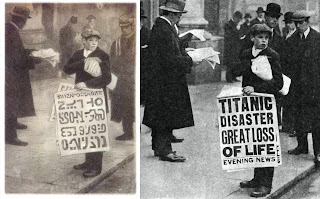The Arrival, by Shuan Tan
How does it tell without using words
"The Arrival", by Shuan Tan, is a collection of imageries that surrealistically captures the industrial-era immigration experience.
"The Arrival", by Shuan Tan, is a collection of imageries that surrealistically captures the industrial-era immigration experience.
What makes the story endearing and visceral is that it does not focus on the particularity of words, but rather the specificity and tactility of moments. For instance, readers can emphasize the language barrier between the immigrant and locals through Tan's use of cryptic symbols as the main language. The readers are put in a situation where they cannot get narrative clues from reading text, so they had to retort to the "conventional reading of body language". The tone of this "narration" is elementary but clear, illustrating the immigrant’s goal of getting his message across in the simplest and most universal way. This is similar to how silent actors act through "convention of expressions" due to the limitation of sound and heavy, wordy dialog. The inability to communicate in another language is also very specific to new immigrants/ foreign tourists. Most of them cannot interact with locals at an advanced technical level due to language barrier, thus they have to communicate through the means of body language instead-because most people at least have a pair of hands and not all of them can roll their rs.
Personally, this experience felt surreal to when I went to Japan as a child (my later trips have the help of my phone). Most locals do not speak English but they are very patient when I used body language to communicate. Many strangers even go as far as to lead the way if I still have a hard time understanding direction. Specifically, when I was eight, I got lost in the Disney sea hotel and could not remember how to get back to my room. Luckily, I saw a janitor (whom I have never met before) and asked her if she knows where my room is. I spoke to her in English but she can only reply back in Japanese. Creepily, she decided to lead the way to my room with a bright smile on her face. Despite the oddness of this story, there were situations where locals will go out of their way to help me. I can feel a strong sense of empathy from the locals because they can relate to how one struggles to speak in an unknown language, much like how the locals in Tan’s story relate to being a new immigrant.
Additionally, The "antique" photo-album format of the panels, and the "Norman Rockwell" qualities of the human characters enhances the nostalgic tone of the story. Many scenes appear to be tributes to early street photographs, some, like the newspaper boy example, is almost a direct copy (As shown below). The drawings' compositional similarity to the photography creates a contextual parallelism, pinpointing the story to a specific time in real world history. Thus, the readers are looking at the same historical picture, but through the immigrant's lens. This was the reason why everything except for the language is changed in the paper boy drawing. In fact, the text that are replaced by cryptic letters insinuates that the focus is not understanding the language, but looking at the people and background (that we can comprehend) surrounding the text.
Tan's Arrival is about understanding the state a person is in, and relating it to our own take of the same state. One of the locals' stories is a couple running from giant vacuum men. The surrealistic aspect of giant men with vacuum acts as symbolizing of a bigger authority eradicating a group of people. Thus the audience does not need to know the actual politics of the place, but can still understand the story of authority trying to erase the identity of people. They can then use the context provided by the comic's stylization and reference to relate to their own real world politics. In other words, Tan is getting rid of all the technical details of storytelling to make it as humane as it can be-so that the most important goal for the reader is not to learn about them, but to relate to them.

Comments
Post a Comment